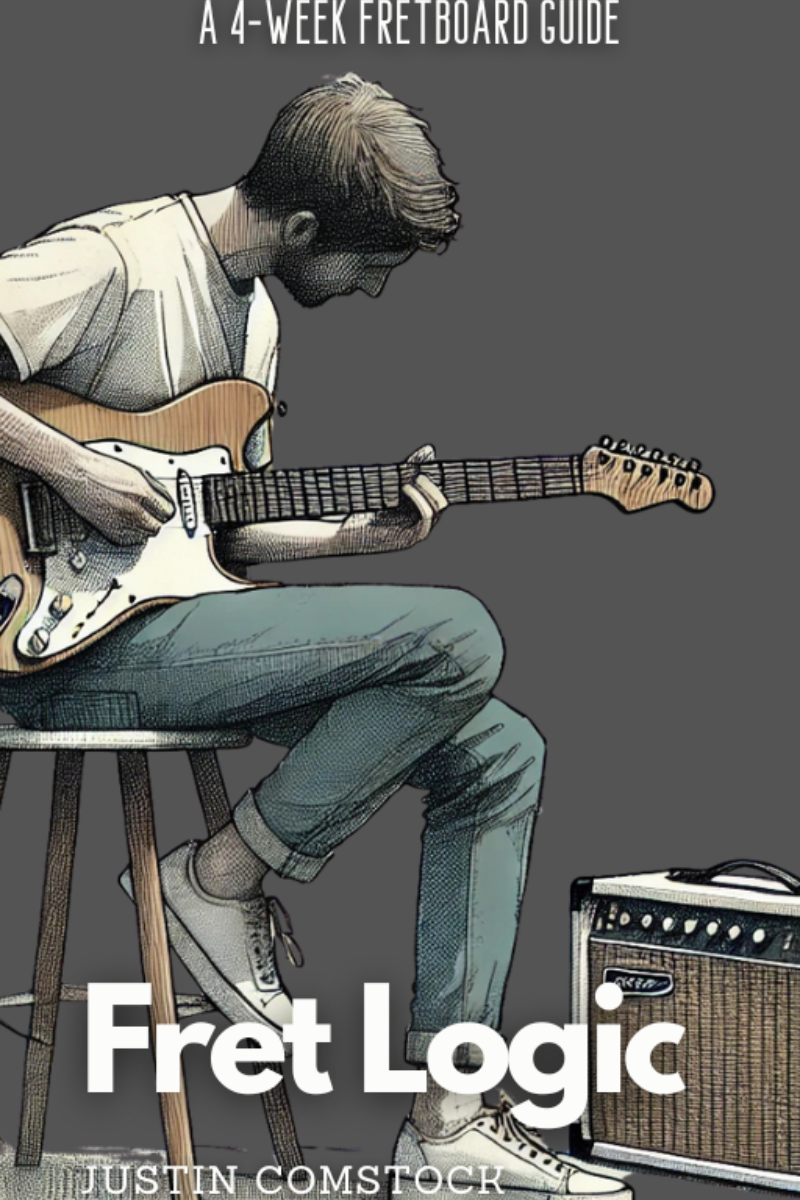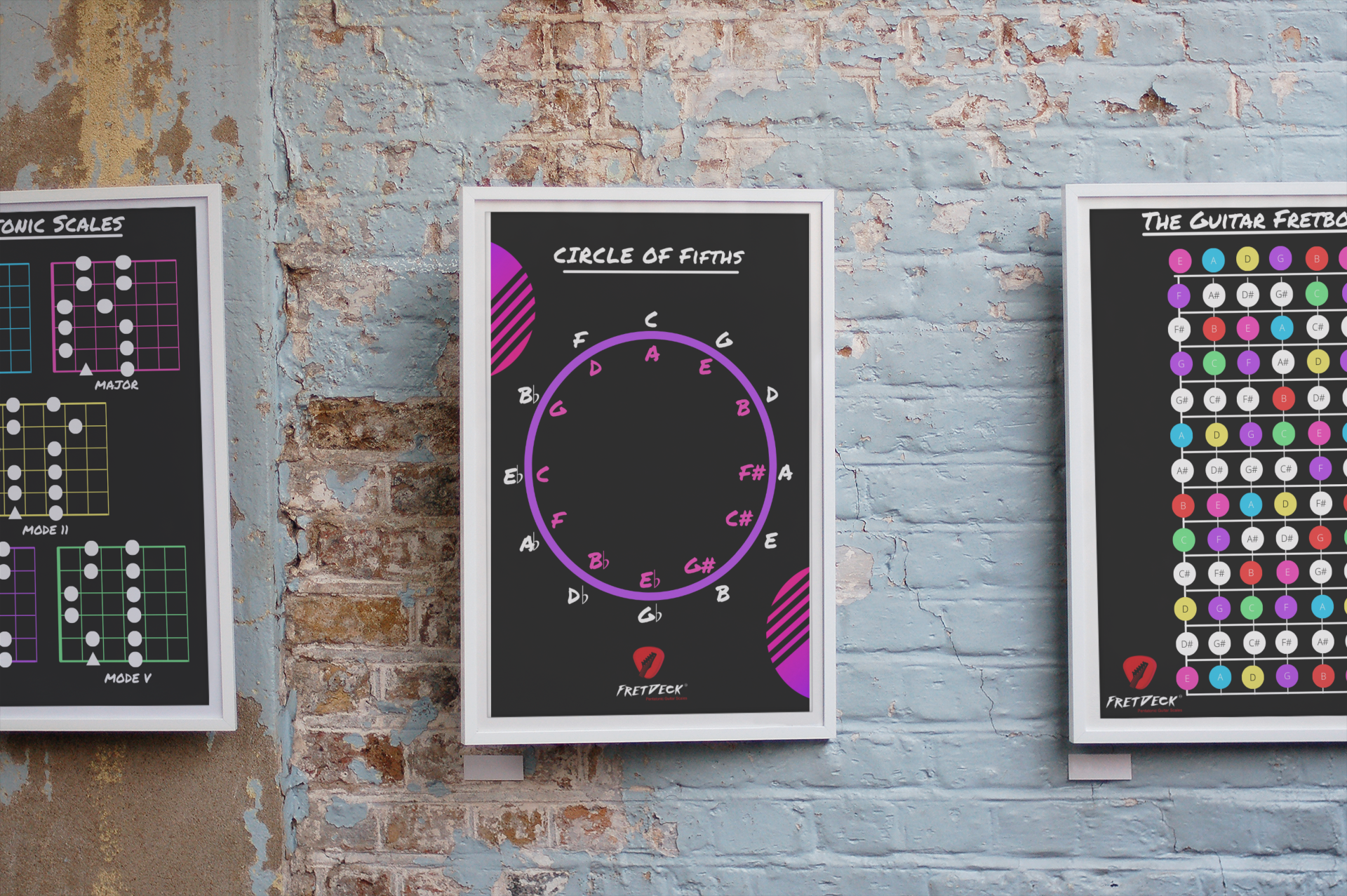“Some chords invite you in. Others push you forward. A7 does both.”
If you’ve ever felt the pull of a blues riff, the snap of a rock turnaround, or the color of a jazz progression, chances are you’ve already heard the power of a dominant 7th chord—specifically the guitar chords A7.
This chord is more than a theoretical shape. It’s a workhorse of groove, tension, and soul. Whether you’re writing a 12-bar blues, comping behind a singer, or crafting gritty riffs, A7 is the sound of movement.
In this post, we’ll explore the DNA of the A7 chord, how to use it in real music, and why mastering it opens the door to dozens of iconic songs. If you’re new to dominant chords—or just want to make yours sound better—this is your roadmap.
🎸 What is a Dominant 7th Chord (and Why Should You Care)?
Let’s get nerdy for 30 seconds:
A dominant 7th chord is built from 4 notes:
- Root – A
- Major third – C#
- Perfect fifth – E
- Minor seventh – G
That G is the secret. It creates tension. It begs for resolution. That’s why the A7 chord almost always leads somewhere—it’s a push chord, not a rest chord.
You feel it in your gut. Play A7 and then D. Feel how it pulls? That’s the magic of dominant function.
🎯 CTA: Want to see dominant 7th shapes and scale connections across the neck?
Back the FretDeck Kickstarter™ and get access to our “BluesCraft” bonus pack. It shows exactly how chords like A7 connect to pentatonic scales and riffs.

❌ Stop Guessing. Start Shredding.
If you’re still fumbling through scale patterns and box shapes… it’s costing you progress.
FretDeck™ is the no-fluff system that shows you exactly how to master the fretboard—fast. Early access.
⚡️ This isn’t for dabblers. It’s for players who want results.
👉 Click here to join the pre-launch now
Early access. Limited rewards. Don’t wait.
🔧 How to Play the A7 Chord (3 Ways)
Let’s get your fingers moving. Here are the three most common—and most usable—shapes of the guitar chords A7.
1. Open A7 (Beginner-Friendly)
e|--0--
B|--2--
G|--0--
D|--2--
A|--0--
E|--x--
- Place index on 2nd fret of D string
- Middle finger on 2nd fret of B string
- Let the rest ring out
- Strum from the A string down
💡 Pro Tip: This chord rings clear and has a “jangly” tone perfect for acoustic blues and early rock tunes.
2. A7 Barre Chord (E Shape)
e|--5--
B|--5--
G|--6--
D|--5--
A|--7--
E|--5--
- Barre the 5th fret
- Ring finger on 7th fret of A
- Middle finger on 6th fret of G
This is your “big sound” A7—great for electric blues, funk, and chunkier comping.
3. Movable A7 Shape (C7 Form)
Take your open A7 shape and move it up the fretboard. For example:
- Move up 2 frets = B7
- Move up 3 = C7
This movable shape gives you a toolkit of dominant chords in every key.
🎵 Why A7 Matters: The Real-World Sound of Movement
Dominant 7th chords aren’t just theoretical—they’re everywhere:
🟦 In Blues:
The 12-bar blues in A is built around A7, D7, and E7. Try this progression:
nginxCopyEditA7 | A7 | A7 | A7
D7 | D7 | A7 | A7
E7 | D7 | A7 | E7
🎧 Listen to: “Hoochie Coochie Man” by Muddy Waters, “Sweet Home Chicago” by Robert Johnson.
🎸 In Rock:
Dominant chords give rock riffs edge.
Try this groove:
mathematicaCopyEditA7 D E7 A7
It’s gritty. It swings. It sounds like The Rolling Stones.
🎧 Listen to: “Honky Tonk Women” or “Pride and Joy” by Stevie Ray Vaughan.
🎷 In Jazz:
A7 becomes A9, A13, A7b9… jazz players use these chords to stretch harmony and guide improvisation.
🎧 Listen to: “All Blues” by Miles Davis, “Freddie Freeloader”, or Coltrane’s changes in “Giant Steps”.
⚡ Connecting Chords + Scales: A7 and the Pentatonic Playground
Let’s get to the sauce:
If you want to solo over A7, use the A minor pentatonic scale, but don’t stop there.
You can highlight the C# and G notes (the 3rd and 7th of A7) to sound more intentional.
Here’s a lick:
e|--------------------
B|---5--6--7----------
G|-----------6b7r6--5-
D|--------------------
That’s blues language. You’re targeting chord tones, not just running the scale.
🎯 Want to practice riffs over A7?
The FretDeck™ system teaches you how to connect chords and scale shapes across the neck.
👉 Back it here and get instant access to our Discord + bonus licks pack.
🧠 Use A7 as a Transition Chord
Here’s where the real fun starts.
Try this:
- D → A7 → E
- G → A7 → D
- C → A7 → Dm
A7 is a pivotal chord—it leads the ear somewhere. It adds movement, grit, and anticipation.
Try using A7 instead of A major in any song. Feel how it pulls the listener’s ear forward?
🔥 Pro Tips for Making A7 Sound Better
- Palm mute the low strings when strumming for a tighter blues tone.
- Slide into the barre A7 from the fret below for a classic funk move.
- Use double stops from the chord tones to create mini-riffs.
🎸 Mini Exercise:
- Strum A7 once
- Play G note on high E (3rd fret)
- Slide from F# to G
- Bend G slightly
- Land back on A7
That’s guitar language. Not scale shapes. Not charts. Just sound and feel.
🎶 Iconic Songs That Use A7 Chords
Here’s a quick list of must-learn tunes that feature the guitar chords A7:
| Song | Artist |
|---|---|
| Sweet Home Chicago | Robert Johnson |
| Pride and Joy | Stevie Ray Vaughan |
| Crossroads | Cream (Eric Clapton) |
| Honky Tonk Women | The Rolling Stones |
| Before You Accuse Me | Bo Diddley / Clapton |
| Boom Boom | John Lee Hooker |
These tracks are masterclasses in using dominant chords for rhythm and lead.
✅ Practice Prompt: 12-Bar Blues in A (With A7)
Start your session like this:
- Loop this chord progression:
A7 | A7 | A7 | A7
D7 | D7 | A7 | A7
E7 | D7 | A7 | E7
- Use the A minor pentatonic to solo
- Record yourself
- Share in our Discord to get feedback
🎯 Join the Guitar Freaks Hangout Discord and post your version.
It’s free. It’s fun. And we’re all learning together.

Join Guitar Freaks Hangout on Discord! 🎸
Get Fret Logic FREE!
Join the Guitar Freaks Hangout Discord and get exclusive access to my entire e-book, Fret Logic! Master the fretboard and elevate your solos with this comprehensive guide.
👉 Don’t miss out—join now and download your free copy!
🧱 Final Thoughts: One Chord That Opens Every Door
The guitar chords A7 are more than a shape—they’re a language. A flavor. A push into blues, jazz, funk, and beyond.
Whether you’re strumming through a 12-bar, backing a singer, or building your own riff-based anthem, A7 gives you color, character, and control.
It’s one of the first chords I show my students—and one they return to again and again.
🎁 Final CTA:
Ready to master A7 and every scale that fits around it?
- ✅ Back the FretDeck™ Kickstarter
- ✅ Get the Pentatonic Secrets course + Card Deck bonus pack
- ✅ Join the Guitar Freaks Hangout Discord for community support
🔗More Info
Check out our guide to triads on guitar to see how A7 can be broken into smaller movable shapes.

Download FREE Guitar Charts!
We have 27 FREE guitar charts to help you learn the guitar fretboard. Learn How to play chords and scales with these free resources.
Free Guitar Resources










